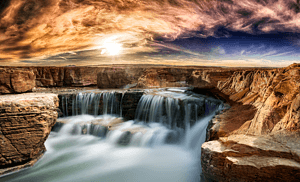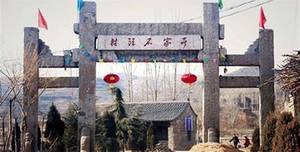Experience the charm of the surroundings of Yanmen Pass in northern Jin
4 cities |
13 attraction(s) |
total distance 437
km
 TIPS
TIPS
Day1
Day2
Day3
Day1: Taiyuan > Xinzhou
5 attraction(s) ·
225 km
2
This restaurant does not have so many restrictions, so it will offer some meat dishes. Here are the highlights: the signature dish is Braised Chicken with Taiwan Mushrooms, and the chicken soup is very tasty. Braided Potato Shreds is a local specialty. Those who are interested can taste it.
6
km
3
Wutai Mountain is located in Wutai County in the northeast of Shanxi province, with an average altitude of over 1000 meters. The highest peak, Beita Yemei Peak, reaches a height of 3058 meters and is known as the "roof" of the North China region. Wutai Mountain is named for its five towering peaks, resembling five giant columns supporting the sky. Due to the cold climate in the mountainous area, even in the peak of summer, it remains cool and refreshing, earning the name "Cooling Mountain". Wutai Mountain offers a blend of natural scenery, historical relics, ancient architecture, Buddhist culture, local customs and summer resorts, making it an attractive tourist destination.
As a world-renowned Buddhist holy site, Wutai Mountain is the place of practice of Manjusri Bodhisattva and the first of the Four Sacred Mountains of Buddhism in China. It is also known as Golden Wutai. The temples and buildings of Wutai Mountain have a long history and grand scale, dating back to the reign of Emperor Ming of Han Dynasty. During the Tang Dynasty, due to the flourishing of Manjusri faith, there were over 360 temples on the mountain. In the Qing Dynasty, with the introduction of Lamaism, the unique green and yellow temples appeared. The area inside the five peak tops is called "Tainei," while the outer area is known as "Taiwai."
Legend has it that Wutai Mountain was originally a territory of Taoism named Zifu Mountain, where Zifu Temple was built. Later, Buddhism was introduced, and in 67 A.D., Emperor Ming of Han Dynasty sent envoys to the Western Regions to seek Buddhist teachings. Two Indian monks, Sakyamuni and Zhu Falan, came from Luoyang to Wutai Mountain to build temples and settled here in their later years. At that time, Wutai Mountain was the base of Taoism, and the relationship between Buddhism and Taoism was always tense, so they had a "burning scripture" contest. As a result, the Buddhist sutras survived while all Taoist scriptures were burned. Since then, Wutai Mountain gradually became a place of worship for the Buddhist faith.
6
km
4
Due to religious factors, there are no meat dishes available, but this restaurant tries to make vegetarian dishes taste like meat dishes and has a great texture! When you come to Shanxi, noodles are a must-have specialty, particularly hand-pulled noodles and buckwheat noodles, which are well-known classics and worth a try.
1
km
5
Day2: Datong
4 attraction(s) ·
97 km
1
The building previously known as "Xuankong Ge" is now called "Xuankong Temple" because the entire temple is suspended on a cliff. Xuankong Temple has a wooden framework structure consisting of 40 buildings including halls and pavilions. Despite its relatively small size, its impressive use of mortise and tenon joints allows it to be firmly embedded in the cliff. Created in the Northern Wei Dynasty, Xuankong Temple has a history of over 1500 years and is the oldest and most well-preserved high-altitude wooden structure cliff building in China. The various halls and pavilions of the temple are connected by plank roads, and although its scale is not large, its exquisite craftsmanship impressed the poet Li Bai and was praised by Xu Xiake as the pinnacle of harmony in the world.
7
km
2
The visit to the Hanging Temple is relatively short, but it is also necessary to replenish energy for the afternoon climb, so I recommend this restaurant nearby. The deep-fried meat is highly recommended and has a great taste! The famous Huyuan cold noodle is also available here. Additionally, the tofu is homemade.
90
km
3
Delicious taste, affordable price, excellent value for money. Many loyal customers recommend the Peach Kernel Chicken and Stir-Fried Beef. They are definitely worth a try! Additionally, I highly recommend the main dishes in Datong, which are both generous in portion size and delicious. Whether it's noodles or fried pancakes, they're all worth trying!
2
km
4
Located in the commercial and political center of the mining area in Datong City, Shanxi Province, China's largest coal base. 24-hour hot water, broadband for hosting foreign guests, hair dryer, air conditioning, laundry service, wake-up service, international long-distance telephone, luggage storage.
Day3: Datong > Shuozhou
4 attraction(s) ·
115 km
2
Yungang Grottoes is one of the four major grottoes in China, carved during the Northern Wei Dynasty when they ruled over northern China. The scenic area is divided into two parts: the landscape area and the grottoes. The grottoes are the main attraction, with about 40 currently open caves divided into three areas. The third cave is the largest at Yungang, while caves five and six are double caves with exquisite wall paintings that are considered the representative works of the Yungang Grottoes. In addition, there is a grotto museum in the scenic area that displays relic fragments, allowing visitors to better understand the history and significance of the grottoes.
96
km
3
There are many local restaurants near the scenic spot, and they all have their own characteristics. I highly recommend "liang fen er"! It has a combination of sour and spicy flavors, which brings a refreshing feeling. It is different from the spiciness of Sichuan and Guizhou cuisines and has a unique taste. It is really delicious! You can pick any one of them haha. I remember "you mian kao lao lao" made by my grandma is also very good~
2
km
4
This wooden pagoda is considered one of the tallest and oldest in the world. It was built in the second year of the Qingning period of the Liao Dynasty in 1056. Despite enduring strong winds, heavy rain, earthquakes, and artillery bombardment, it still stands tall. This is because it was constructed using the method of interlocking brackets, beams, and pillars, without the use of nails or rivets, with over 50 different types of brackets used for support. Curious individuals have even passed a thin rope across the wooden pillars and stone base to determine the alternating interval of the pillars, as these wooden pillars do not have sockets and rise directly from the plane of the stone base. Inside the pagoda, there are wooden stairs that lead to each level, each with different views. The most impressive feature is the giant Buddha statue inside the pagoda, particularly the 11-meter-tall statue of Shakyamuni Buddha on the first level. Surrounding the statue are exquisite murals depicting vajras, heavenly kings, disciples, and benefactors. The second level of the pagoda is octagonal and filled with natural light, offering pleasant scenery, with a main Buddha, two bodhisattvas, and two attendants arranged within. The third to fifth levels house various statues of bodhisattvas in different poses and forms.































